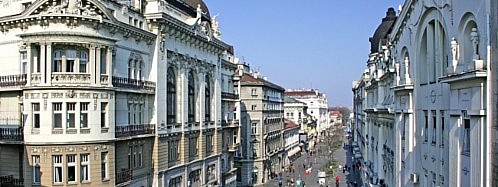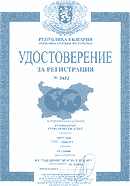Top offers
Serbia Travel







Booking on-line - prices 2020 > Serbia Travel
Serbia
The Republic of Serbia is a country in Southeastern Europe. It is a popular tourist destination with plenty of historical, cultural and natural attractions. The country is a great place for skiing holidays, excursions, city, spa, religious, alternative and ecotourism.
Belgrade is the capital of Serbia, and it is the largest city in the country. It lies in the north part of the Balkan country at the mouth of the Sava River. It has a population of 1.2 million people. Picturesque and modern, Belgrade has to offer its visitors a fascinating range of cultural and architectural landmarks such as the Ethnographic Museum, the Patriarchate, the House of the National Assembly, the National Theatre, the churches “St. Mark” and “Saint Sava”, the former royal palace, Princess Ljubica’s Konak and many others. Most of those buildings were built in the late XIX and early XX century.
Belgrade boasts over 30 museums and art galleries – the Museum of Hunting, the Museum of the Serbian geographer, Jovan Cvijic, the Railway Museum, the Gallery of Modern Art. Here you can also visit the museum of one great inventor - Nikola Tesla. Tesla was an ethnic Serb, who spent most of his adult life in the country of the unlimited opportunities, USA. Often referred to as “the man who invented the XX century”, Nikola Tesla went down in history with his scientific achievements in electricity and magnetism.
The seven theatres also contribute to the rich and varied cultural life of the Serbian capital, and in May the city holds the annual music festival “Belgrade Spring” as well as the international children‘s festival in October “The Joy of Europe”. The statue of Victory, built in 1928, has become a symbol of the city. Set on a pedestal above a stone column, the sculpture represents the bronze figure of a man, holding a sword in one hand and a dove in the other.
Belgrade is the guardian of one of the finest cultural and historical heritages. One of its best places to see is the Kalemegdan Fortress. According to historical sources Kalemegdan was a part of a city fortress dating back to the Middle Ages. During the time when the city was part of the Ottoman Empire, the fortress received its name “Kalemegdan” which means “castle”, “square”. The castle is located in Kalemegdan Park. It is the biggest park in Belgrade and is among the main attractions of the Serbian capital.
The fortress has been restored several times. Its architecture is authentic. One of the most attractive parts of the castle is a medieval clock tower, built in the XVI century. The fortress is made of several watchtowers and a massive stone fortification. The locals believe that it was the white stones used to build the fortress that gave the city its name – Belgrade, the white city.
Pirot is yet another tourist destination worth visiting. Located in the southeastern part of Serbia the town is an area of spectacular natural beauty where you can see the Balkan Mountains, Vlaska Mountain, Belava, Suva Mountain. The rivers that run through the city are the Nishava, Erma, Rasnichka River, Temstitsa and Visocica and the four lakes - Zavoj, Berovachko Lake, Krupach and Sukovo. The city has a unique and colourful cultural history, and remarkable Orthodox churches such as “St. Petka”, St. George and St. John the Apostle’s Monastery dating back to the end of the XIV century. It is a fine example of medieval Serbian architecture. Pirot is famous for its traditional hand-woven carpets made of natural fabrics and wool that can be seen and purchased in almost every shop in the city.
The national park Fruska Gora is one of the most beautiful places in Europe, and it is there that the historical town of Sremski Karlovci is located. It is a great place for walks, picnics, fishing or rock climbing. There are 16 Orthodox monasteries in the park which are well-known for their architecture and riches.
The most popular ski destination in Serbia is Kopaonik. Kopaonik is a big mountain in the central part of the country and its highest peak is 2000 meters high. The mountain resort is great for skiing and snowboarding. It has 25 lifts, but if you don’t feel like skiing, you can always go sightseeing. Every March the town holds the Big Snow Festival, where you can enjoy a mixture of winter sports and live music.
There are more than 300 mineral and thermal springs in Serbia. Many cities run spa businesses in the central part of the country with Mataruska Banja, Niska Banja, Soko Banja among others. There are opportunities for health spa tourism in the spa centers of Prolom Banja and Lukovska Banja, as well as in the recreational facilities located in the Serbian part of The Balkan Mountains.
The lovers of alternative tourism won’t be able to resist the many Serbian caves and the great opportunities for rafting. The biggest and most spectacular caves are located in the eastern part of the country. The most famous among them are the Marble Cave, Potpetska, Resavska and Zlotska Caves. The oldest and most attractive is the Resavska cave, which is on two levels with many smaller caves in it. Serbia offers excellent conditions for the extreme sports enthusiasts. The main white-water rivers are the Drina, Ibar, Lima and Uvats. The most famous is the Drina, which in its Serbian part is 220 km long and passes through a great canyon which is the second deepest in the world after the Grand Canyon in the US.
Many of the tourists who visited the country remain pleasantly surprised by the kind treatment of local people and the delicious Serbian cuisine. The symbol of the Serbian cuisine is the pleskavitsa, which can be cooked with minced meat and a variety of spices, chilies and cheese added to it. The most popular is the Leskovac pleskavitsa, which is made of pork and beef but is quite hot and chilly. In 2007 the Leskovac pleskavitsa became an official Serbian brand.
Over the past ten years, Serbia has also revived and developed actively its wine industry. One of the best places for wine tourism is Vojvodina and the wineries in Vrsac in the northeast part of the country are a major producer of white wines and had even delivered their wines to the Serbian kings.
A great many annual festivals are organized throughout the country. Most of them are held in late August, for instance the festival of brass bands in Guca. The most famous Serbian culinary festival is Roshtiliada, also called the Festival of the Pleskavitsa. It is held in Leskovac. There, in the last days of August, chefs from around the world gather together to prepare delicious cevapcici, uviyachi, kebapcheta and veshalitsi. The event is accompanied by traditional Serbian music, and every year they break all previously set world records in baking the largest pleskavitsa.
Hospitable and welcoming, Serbia is a great tourist destination and the country attracts more and more visitors from around the world.



